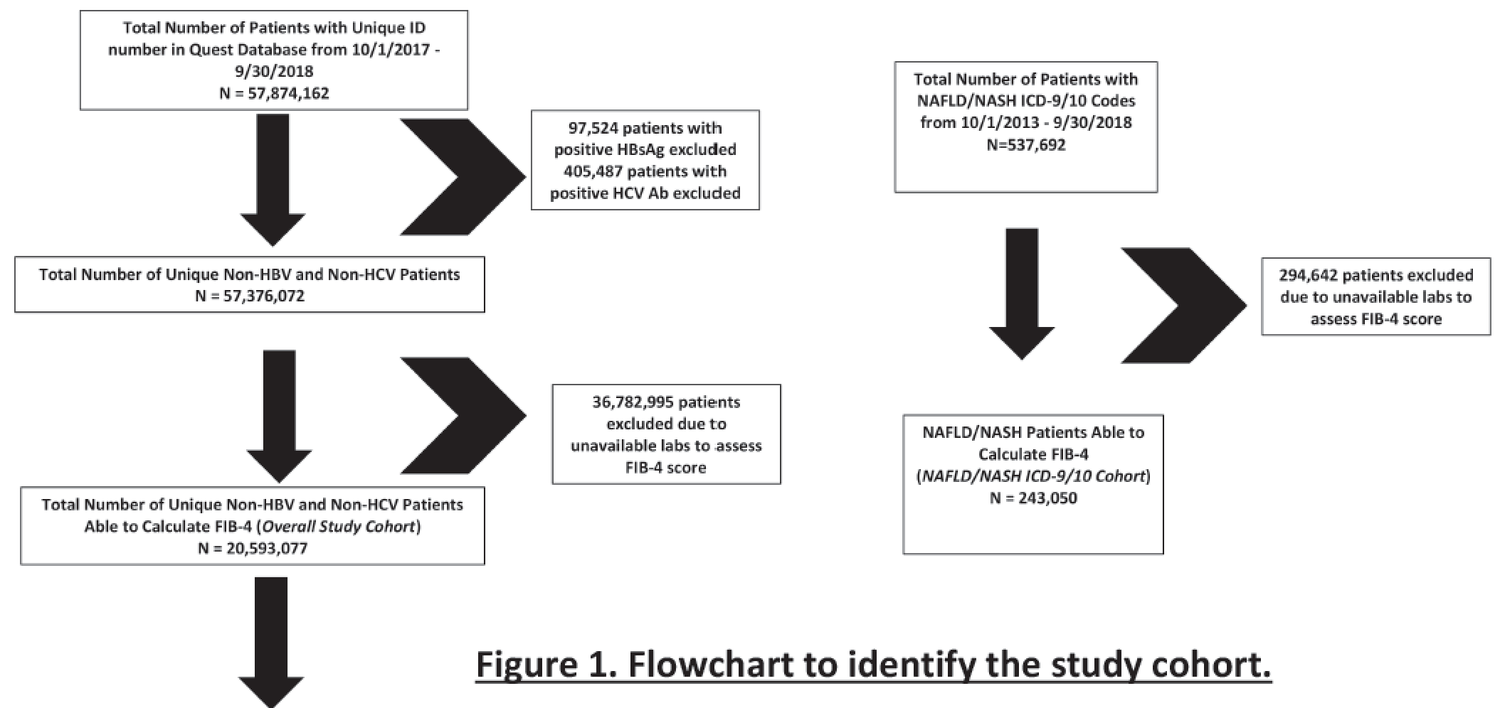Metabolic Co-Morbidities and Higher Risk of Advanced Fibrosis in Patients with Nonalcoholic Steatohepatitis

Increasing Number of Metabolic Co-Morbidities are Associated with Higher Risk of Advanced Fibrosis in Patients with Nonalcoholic Steatohepatitis
Abstract
Background and aims: Accurate estimates of non-alcoholic steatohepatitis (NASH) prevalence are lacking, particularly the subset of patients with advanced fibrosis. We aim to evaluate prevalence and predictors of advanced fibrosis among patients with probable NASH using national clinical laboratory data.
Method: Clinical laboratory data from October 1, 2017-September 30, 2018 were collected using Quest Diagnostics database, which tests ∼30% of U.S. adults annually. Adults with negative hepatitis B surface antigen, negative hepatitis C antibody, and elevated alanine aminotransferase (ALT) (>25 U/L women, >35 U/L men) were evaluated for prevalence of ≥F 3 fibrosis using fibrosis-4 score (FIB-4)>2.67.
Patients were grouped by presence of one, two, or three concurrent metabolic co-morbidities (decreased high density lipoprotein (<40 mg/dL in men, <50 mg/dL in women), elevated triglycerides (≥1 50 mg/dL), or elevated hemoglobin A1C (≥6 .5%)). We further evaluated patients specifically with NAFLD/NASH ICD-9/10 codes from October 1, 2013-Septebmer 30, 2018 (n = 243, 050). Multivariate logistic regression models evaluated for predictors of ≥F 3 fibrosis.
